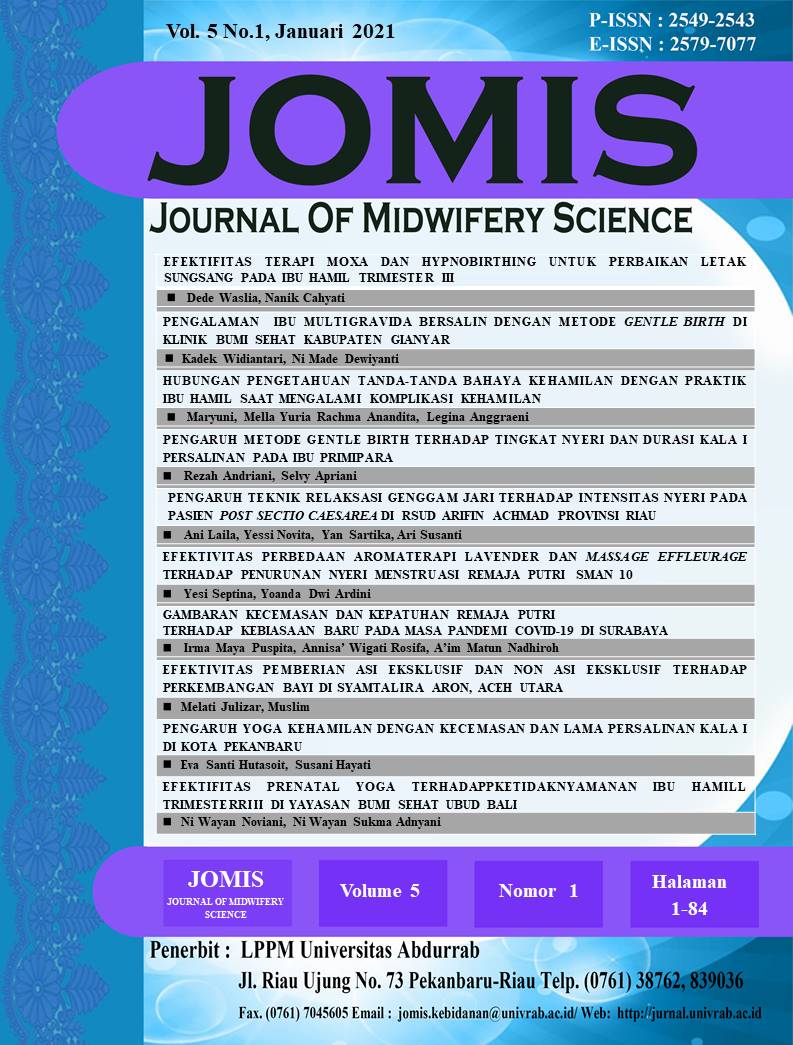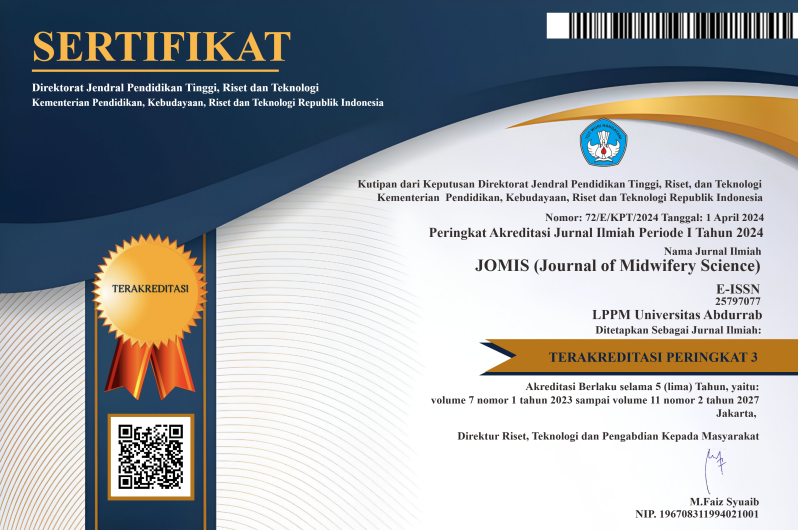PENGARUH TEKNIK RELAKSASI GENGGAM JARI TERHADAP INTENSITAS NYERI PADA PASIEN POST SECTIO CAESAREA DI RSUD ARIFIN ACHMAD PROVINSI RIAU
DOI:
https://doi.org/10.36341/jomis.v5i1.1495Keywords:
Handheld finger relaxation techniques, pain, ceasarean sectionAbstract
Cesarean section gives effects to the mother, including post-surgical pain. The pain cause physical and psychological reactions for the postpartum mother such as impaired mobilization, lazy activity, sleeplessness, loss of appetite, and lack of care for the baby. To overcome this, there are need for a way to control pain with non-pharmacological therapy, one of which is handheld finger relaxation technique. The purpose of this study was to determine the effect of handheld relaxation technique on the intensity of pain in post-cesarean section patients in Camar I Room of Arifin Achmad Hospital in Riau Province. This pre-experimental study used one group pretest-posttest design. This study was conducted from March to June 2018. The population was all post-cesarean section mothers with a sample of 20 people. Data were analyzed using the Wilcoxon test. The result showed that the mean pain intensity before handheld relaxation techniques was 6.05 while after was 1.50. The result was affects of handheld relaxation techniques on the intensity of pain in this study with a p value of 0.000 (α <0.05). The results of this research can be used as a method for reducing pain in post-cesarean section patients at Arifin Achmad Hospital in Riau Province.
Downloads
Downloads
Published
Issue
Section
License
1. Copyright of all journal manuscripts is held by the JOMIS : Journal of midwifery scinece
2. Formal legal provisions to access digital articles of electronic journal are subject to the provision of the Creative Commons Attribution-ShareAlike license (CC BY-NC-SA), which means that JOMIS : Journal of midwifery scinece is rightful to keep, transfer media/format, manage in the form of databases, maintain, and publish articles.
3. Published manuscripts both printed and electronic are open access for educational, research, and library purposes. Additionally, the editorial board is not responsible for any violations of copyright law.
licensed under a Creative Commons Attribution-ShareAlike 4.0 International License.










